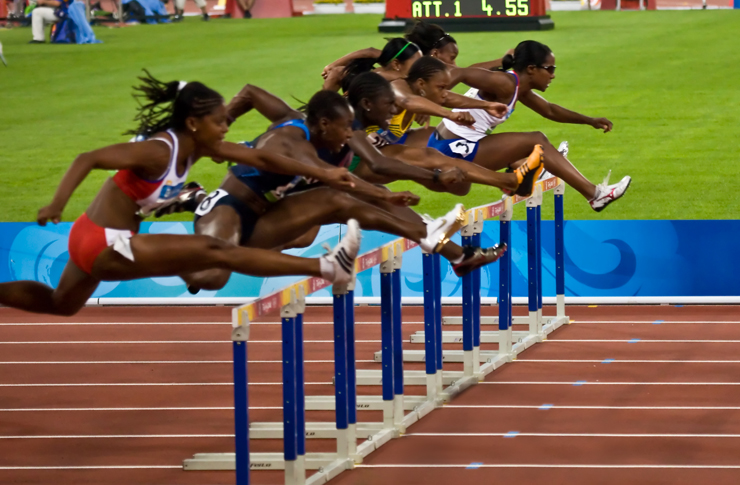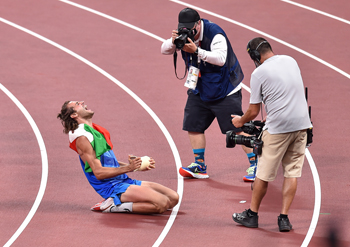The classification of surface types given in the World Athletics manuals and the FIDAL’s technical indications call for an in-depth study to clarify the range of technical possibilities, remembering that each surface must be functional for the use that will be made of the sports facility.
An introduction to Special Report #35: Athletics Surfaces

Athletes in the 110 Hurdles at Beijing 2008 (photo Pete Niesen/Shutterstsock)
The Italian successes at the Tokyo Olympics have opened a season in which lightweight athletics has regained a certain amount of interest in general expectations.
The state of the basic facilities in Italy is not the best; however, it is also true that there are an increasing number of construction sites open on athletics tracks for the renovation of surfaces and their re-approval.

In the last 15 months alone (January 2022-March 2023), our surveys (published monthly in the ‘Costruendo’ newsletter) report 36 planned and/or financed interventions, 38 construction sites opened and around 20 inaugurations, in as many Italian municipalities. As a reminder, at the beginning of 2022, FIDAL recorded the existence of 1,422 facilities, of which 902 can be classified as ‘complete’ (categories A and B of the SmarTrack Technical Circular). The others are reduced facilities that are usable for partial activities, and ‘exercise’ or school facilities. However, the slopes with non-expired homologation accounted for slightly more than 20 per cent of the total, hence the renewal activity of the facilities currently underway.
As we often have to remember, in all works the difference is made by correct design and worksite management, which cannot be entrusted to professionals without the necessary experience in the specific field. Procedural uncertainties are found starting with the specifications: the description of the sports turf to be used, often uncritically taken from the types described in the FIDAL Circular, ends up not corresponding to what is actually laid if one plays on the misunderstanding of “equivalence”, where price can be a premium over the performance characteristics of the surface.
It is therefore useful to go back over the contents of the national (FIDAL) and international (WA) manuals, remembering that design decisions should not be taken ‘lightly’ but must be absolutely reasoned according to the result to be obtained on the field.










